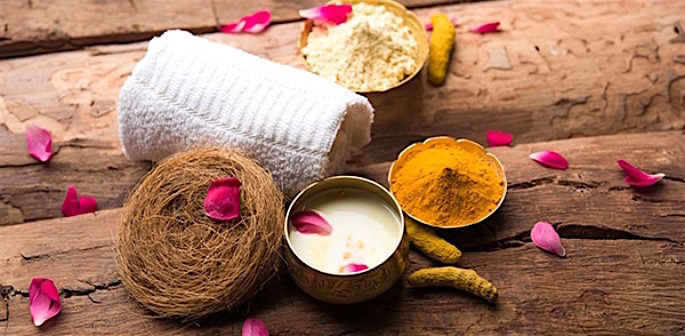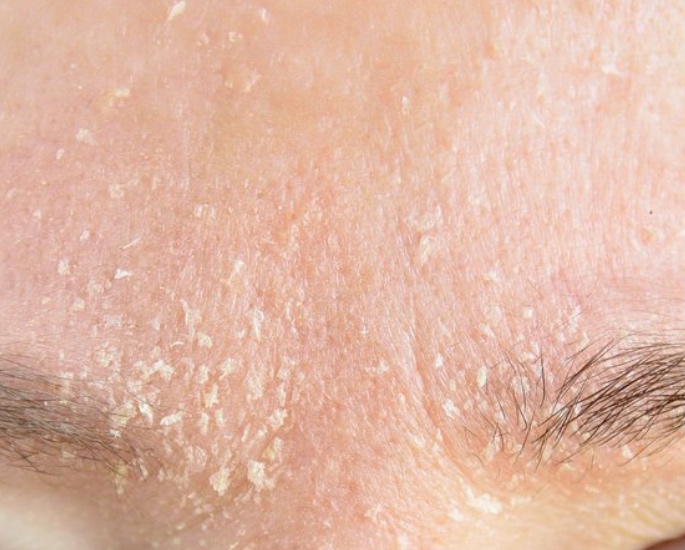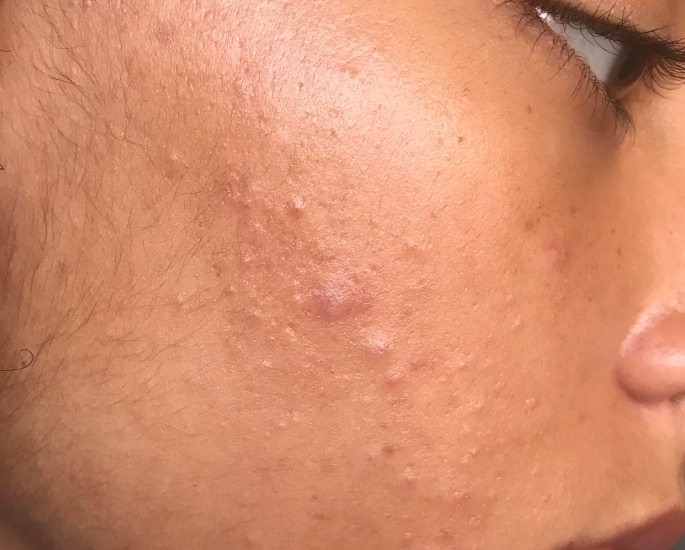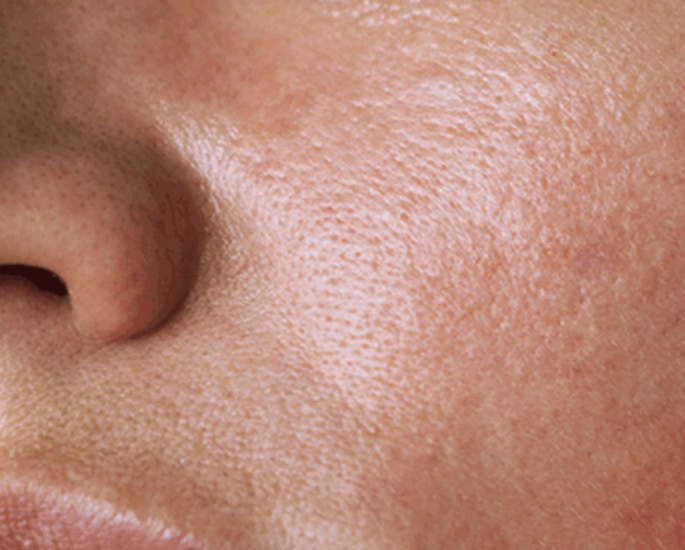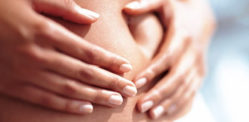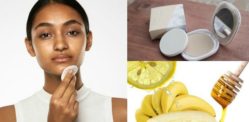Ayurvedic beauty suggests a gentler approach.
According to Ayurvedic beauty, your skin is a reflection of your overall health.
Just like a tree’s leaves indicate the health of its roots, your skin shows signs of what’s going on underneath the surface.
Ayurvedic medicine has long recognised this holistic perspective. Its rich history of knowledge reveals that when figuring how to best care for your skin, it’s important to look at your body as a whole.
According to Ayurvedic medicine, there are three energies or doshas, that influence the body: Vata, Pitta and Kapha.
Each dosha is ruled by a dual combination of elements that characterises how it functions in the body.
Vata is ruled by air and ether, Pitta by fire and water and Kapha by earth and water.
Everyone’s body is unique, meaning each body carries a unique combination of these doshas. This combination is not fixed and can fluctuate over time.
Ayurvedic beauty takes into account that the balance of these energies has many factors. These include age, genes, diet, hormonal levels, activity and external skincare.
By identifying which dosha is most dominant in you, you can learn more about how to bring balance to your body and mind.
The numerous benefits of Ayurvedic beauty prove that true skincare goes far beyond the surface.
With the rising popularity of Ayurvedic practices, health and beauty experts all over the world are incorporating a holistic, mind-body approach to better skin.
There are plenty of Ayurvedic beauty products out there with all-natural, organic, sustainably sourced ingredients so that you can treat your skin gently and kindly.
However, healthy, happy skin depends on a lot more than just the products you’re using.
Once you know which dosha, or combination of doshas, your body consists of, there is a whole array of dietary, exercise and skincare tips customised just for you.
Try out these Ayurvedic beauty tips to find out more about your unique skin type and how to care for it in the best way possible.
Vata Skin
Vata is the dosha ruled by air and ether. If you find your skin tends to be dry, thin, fine-pored and cool to touch, you are likely to have Vata skin.
Vata skin is especially vulnerable to dry, windy weather and can easily become dehydrated. It, therefore, requires a lot of nourishment and hydration, from both inside and out.
This means that the most crucial part of an Ayurvedic beauty routine for Vata skin is moisturising.
Using sesame, jojoba or almond oil to moisturise Vata skin can work wonders. Not only are these oils heavily moisturising, but they also have inherently warming properties to balance out the coolness of Vata skin.
Another tip is to switch to oil-based products to avoid stripping your skin of its natural oils. Always use makeup, cleansers and exfoliators with moisturising properties to regularly give Vata skin the nourishment it needs.
Texture and temperature play a big part in determining which food is best for your skin type.
Since Vata skin tends to be cold and dry, those with this skin type should try to eat foods that are warm and soft.
Avoid eating raw, cold foods that are difficult to digest and instead opt for food that is cooked and well-spiced to create balance.
Ayurvedic beauty stresses the importance of eating the right foods to nourish the skin from within and truly achieve holistic balance.
Sebastian Pole, co-founder and herbal director at Pukka Herbs, has adopted this Ayurvedic philosophy.
Because we cannot scrub our inner body, we need to learn a few skills to help cleanse our tissues, organs and mind. This is the art of Ayurveda.
For Vata skin, a diet with plenty of healthy fats and oils, such as ghee and olive oil, is excellent at lubricating the body’s insides.
Experts suggest a regular intake of avocado, nuts and seeds can help restore the body’s natural moisture balance, as well as dairy products such as whole milk, butter, cheese and eggs.
Even herbs and spices play a vital role in Ayurvedic beauty regimes.
Those with Vata skin should aim to cook with warming, grounding flavours. Ingesting black pepper, ginger, cardamom, cinnamon and turmeric all help to naturally raise body temperature, aid digestion and flush toxins from the body.
Drinking fluids is essential for those with Vata skin. Lukewarm water is especially good at rehydrating the body from within.
Ayurvedic beauty practitioners advise those with Vata skin to stay away from drinks below room temperature and opt for warmer beverages instead.
An imbalance of doshas in the body can also be pacified through certain types of activity or exercise.
Since those with Vata skin may have an excess of the air element, movements that help to connect the body to the earth can make a huge difference.
Exercising outdoors and in nature and even being barefoot, can be tremendously supportive for Vata skin types.
Movement that encourages fluidity and flexibility can also counterbalance the rigidity associated with Vata skin. Tai chi, swimming and yoga are all forms of exercise that can help release excess Vata energy from the body.
Pitta Skin
If your skin is naturally warm in temperature and prone to redness, blemishes and excess oil, your dominant dosha may be Pitta.
This skin type is ruled by the elements of fire and water, meaning it can easily become too warm and oversaturated with moisture.
This excess energy can surface through the skin in the form of acne, rashes, redness, eczema and psoriasis. Since inflammatory conditions are common, it is imperative to cool the skin from both inside and out.
Pitta skin needs a light moisturiser to soothe and nourish the skin without giving it any excess oil.
Olive oil and moringa oil are both highly nutritional and lightweight, while coconut oil’s anti-inflammatory properties can help to balance out any redness.
However, the most important part of a Pitta skincare routine is cleansing.
Ayurvedic beauty stresses that a cooling cleanser applied regularly can provide Pitta skin with some much-needed relief. Aloe vera, also known as ‘the miracle plant’, is a wonderful remedy for oily or irritated skin.
Make sure to look out for products with cooling essential oils in them. Sandalwood, rose, lavender and chamomile all help to soothe Pitta skin and battle redness.
To cool the body from within, Ayurvedic beauty experts suggest limiting the intake of any hot, spicy and deep-fried foods.
Most spices are heating by nature, but there are some that can be beneficial to Pitta skin in small amounts. These include coriander, fresh basil, cumin, mint, dill, fennel and parsley.
On the other hand, Pitta skin types should avoid spices like paprika, garlic, cloves, rosemary, methi, sage and thyme.
Since Pitta skin can tend to have excess oil, it is advised to moderate the amount of butter, oil and fat added to meals.
The best diet for this skin type is cool or warm in temperature, with plenty of ripe, refreshing fruit and vegetables.
People with Pitta skin should also try their best to exercise during cooler times of the day and to get plenty of fresh air. This will stop the body from heating up too much.
This doesn’t mean Pitta skin types have to avoid vigorous activity.
Raising body temperature is unavoidable during exercise. To help the body cool down afterwards, try ending your workout with something cooling.
Spending time in or nearby water can be wonderfully balancing and refreshing.
Kapha Skin
The Kapha dosha is ruled by the elements of earth and water. Skin with this dosha is prone to excess oil, enlarged pores, blackheads and pimples.
To avoid these imbalances, Kapha skin must be regularly cleansed. Ayurvedic beauty experts advise gently cleansing the face twice daily.
To moisturise the skin, fast-absorbing oils like frankincense, tea tree, peppermint and eucalyptus oil are ideal. These help to cleanse and tighten pores, leaving Kapha skin feeling replenished.
Kapha skin needs regular detoxification, which is why it benefits most from exfoliation. A deep exfoliation can go a long way to cleanse the skin of impurities that have built up over the week.
For those with excessively oily skin, there can be a tendency to use harsh, chemical-based products to dry the skin out. These products strip the skin of its natural oils, causing more harm than good.
Ayurvedic beauty suggests a gentler approach.
Using natural ingredients, even ones that you can find in your kitchen, makes sure your body is receiving the purest type of care.
For Kapha skin, you can make a paste of equal parts honey and cornmeal to scrub away dead skin while nourishing it at the same time.
In terms of diet, to balance out the dominant earth and water elements, Kapha energy should be enriched with warm, dry foods. These include spinach, sprouts, peppers, wild rice and pumpkin seeds.
Cooking with warm, pungent spices like cayenne, chilli and ginger can also help to increase the fire element in the body.
Another way to counteract the cooling imbalance of Kapha is through exercise.
Regular vigorous exercise fosters smoother circulation and digestion. This allows heat to flow around the body.
Visiting a sauna after exercise can be extremely beneficial for Kapha skin. The humidity helps the skin to release accumulated toxins, as well as relax the muscles and destress.
Calming the mind is important for restoring balance to every type of skin.
Whatever your combination of doshas, dedicating time to care for your mental health can have huge implications for the state of your skin.
Whether it’s through exercise, meditation, creativity or socialising, simply doing things that make you feel good naturally encourages the body to relax.
Achieving better skin can sometimes come from something as simple as eating more Vitamin C or changing your moisturiser.
However, for long-lasting healthy skin, a combination of customised skincare, diet, exercise and rest is the best medicine.
“You can become your own best doctor if you acknowledge the power of self-healing”, says Dr Kshirsagar, a world-renowned Ayurvedic physician and educator.
Recognising the simple yet practical tools of Ayurvedic beauty can reveal a path to a healthier, more balanced self.
Above all, Ayurvedic beauty focuses on developing a strong intuitive connection with your own unique body.
If we are aware of how our bodies are changing and what they need in each moment, we can care for our skin in a way that aligns with those needs.
Ayurvedic beauty encourages us to think about our health from a wider perspective. Skincare is just one piece of the puzzle.



















































